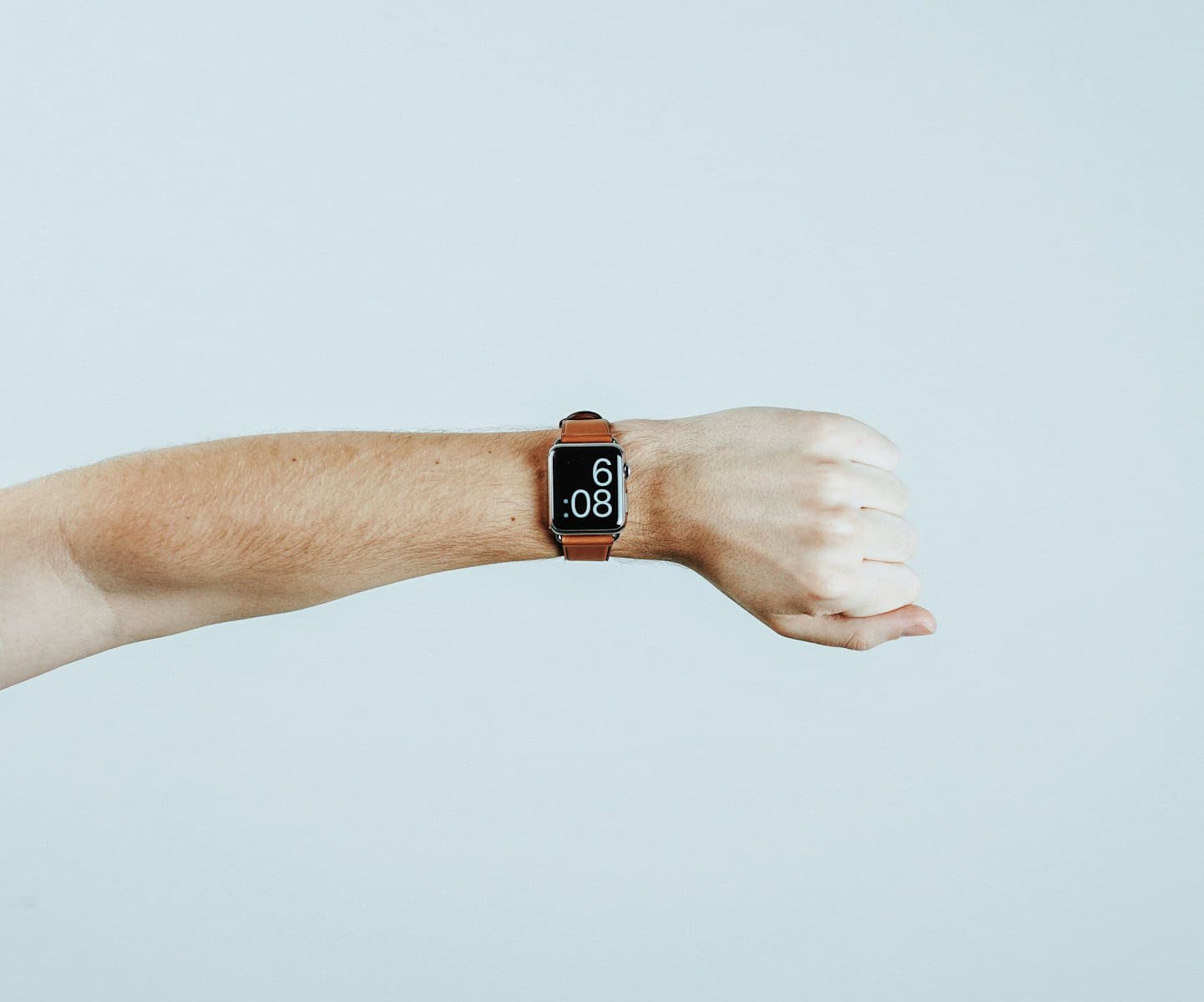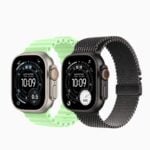It’s important to consider whether it’s safe for your skin to wear an Apple Watch all the time. Many people use the Apple Watch daily to track their activity and receive notifications. However, keeping it on your wrist for long periods could cause skin irritation or other issues. While skin reactions are not common, they can happen, so it’s good to know how to prevent them. Different factors can cause skin problems, like allergic reactions to materials, sweat getting trapped under the watch, or heat from the device.
The Apple Watch is designed to reduce skin discomfort, but users should still clean both the watch and their skin regularly. It’s also important to wear the watch properly—not too tight or too loose. To stay comfortable, it’s wise to take off the watch from time to time, especially after workouts that make you sweat. Choose a band material that works for your skin type and ensure that any case or screen protector doesn’t irritate your skin. By following these simple tips, you can lower the chance of developing skin issues from wearing your Apple Watch.
Understanding the Skin Risks of Wearing an Apple Watch 24/7
While the Apple Watch is designed for all-day wear and fitness tracking, keeping it on around the clock can cause unexpected issues—especially when it comes to your skin. Although Apple provides general care guidelines, real-world use has shown that continuous wear might not be ideal for everyone. Here’s a deep dive into what you need to know about skin safety, irritation triggers, and how to protect yourself if you’re part of the always-wearing crowd.
Why Skin Irritation Happens
The most common complaints among Apple Watch users involve itching, redness, or small bumps forming under the band. These issues tend to be caused by a mix of heat, moisture, friction, and allergic reactions. Here’s how each plays a role:
1. Moisture and Friction
Wearing your Apple Watch tightly during workouts, sleep, or even while showering traps sweat and water against your skin. That moist environment leads to friction between your skin and the band, which in turn can cause irritation or even breakdown of the skin barrier.
2. Allergic Reactions
Some users have sensitivities to materials found in the watch or its band, such as nickel, fluoroelastomers, or certain synthetic fabrics. For those with nickel allergies, even minimal contact can trigger allergic contact dermatitis, presenting as a persistent rash under the device.
3. Hygiene Build-Up
Dead skin cells, lotions, soap residue, sweat, and dirt all accumulate under the watch and band. Without regular cleaning, this build-up creates a breeding ground for bacteria and yeast, increasing your risk of infections or folliculitis (inflammation of hair follicles).
4. Pressure and Tightness
Wearing the watch too tightly for accurate heart-rate tracking might improve data, but it also decreases air circulation. A tighter fit amplifies friction and traps heat, both of which are prime contributors to rashes and chafing.
Are Some Bands Worse Than Others?
Yes, the type of band you wear matters. Sport bands made of fluoroelastomer (like Apple’s default band) are durable and water-resistant, but not very breathable. Nylon bands are more breathable but tend to retain moisture if not dried properly. Metal bands, especially cheaper third-party options, can contain more nickel or use coatings that wear off over time, exposing your skin to irritants.
Leather bands, while stylish, also absorb sweat and can harbor bacteria if worn during workouts or in humid environments. The safest choice for sensitive skin is a breathable, hypoallergenic band like woven nylon or high-grade silicone designed specifically for skin safety.
Watch Out for “Forever Chemicals”
Recent concerns have surfaced about the possible presence of per- and polyfluoroalkyl substances (PFAS), also known as “forever chemicals,” in some synthetic watch bands. These compounds are linked to health risks over long-term exposure. While the exact levels in Apple Watch bands remain unclear, if you’re especially health-conscious or have sensitive skin, you might consider rotating away from synthetic materials entirely.
How to Prevent Apple Watch Skin Irritation
Clean Regularly
Wipe down your Apple Watch and band daily—especially after workouts or sweaty conditions. Use a soft cloth and mild soap, avoiding harsh cleaning agents. Make sure to rinse and dry thoroughly before putting it back on.
Let Your Skin Breathe
Take your watch off for at least a few hours a day to allow your skin to rest and recover. During sleep or downtime, letting your wrist go bare can prevent long-term irritation.
Alternate Bands
If you wear your Apple Watch all day, consider swapping bands every few days. This not only reduces wear but also decreases the chances of buildup and gives your skin a break from pressure points.
Adjust the Fit
Don’t overtighten. Your watch should sit snug but not constrictive. You should be able to slide a finger comfortably under the band. Tightness should vary depending on your activity—looser during casual wear and slightly tighter during workouts if needed.
What to Do If You Get a Rash
If you notice redness, itching, or a rash where your Apple Watch sits, take it seriously. Remove the watch immediately and gently wash the area. Applying an over-the-counter hydrocortisone cream can help calm inflammation. Avoid wearing the device again until your skin has fully healed. If symptoms persist or worsen, consult a dermatologist, as prolonged irritation can lead to more serious conditions like eczema or infections.
The Bottom Line
Wearing an Apple Watch all the time may seem harmless, but your skin might tell a different story. A little prevention goes a long way—maintaining good hygiene, choosing the right band, and taking occasional breaks can make all the difference. Your Apple Watch should work for you, not against your skin health. Listen to your body, stay informed, and enjoy the benefits of your device without the discomfort.
Key Takeaways
- Continuous wear of Apple Watch can lead to skin issues but these are not common.
- Proper cleaning and fitting of the device are important for skin safety.
- Choosing suitable materials and letting the skin breathe can enhance comfort.
Understanding Skin Safety with Continuous Wear
Wearing an Apple Watch all day can affect your skin. This section will help you understand the implications and how to keep your skin healthy.
Daily Wear and Skin Health
Wearing any device like an Apple Watch on your wrist every day may create skin concerns. Friction and constant pressure can cause irritation. Some users experience what’s known as ‘Apple Watch rash’. It’s important to let your skin rest. Wear the watch loosely enough so your skin can breathe. Daily breaks from wear help reduce the chances of irritation.
Material Sensitivities and Allergies
The materials making up the bands could lead to allergic reactions. Elements like nickel found in some metal bands cause allergies for some people. Leather bands might also provoke skin reactions if the skin is sensitive. Dermatologists suggest using hypoallergenic bands, especially for users with known sensitivities.
Hygiene and Maintenance Practices
Regular cleaning is crucial for skin safety with wearables. Bands trap moisture and bacteria, leading to skin issues. Clean your band and wrist with a non-irritating soap and dry them well. This simple routine helps avoid bacteria build-up and keeps the skin healthy.
Maximizing Safety and Comfort
Wearing an Apple Watch can be a part of daily life. To ensure safety and comfort, consider the band fit, monitor your skin’s reaction to the device, and select appropriate accessories.
Optimizing Fit and Comfort
The right fit of an Apple Watch is snug but comfy. It keeps the safety features like fall detection precise and the health tracking, such as heart rate monitoring, accurate. For comfort and sensor accuracy, it’s best to wear the watch just above the wrist bone. The Solo Loop, made from liquid silicone rubber or braided polyester yarn, offers a stretchable design for a good fit without clasps or buckles.
- Fit Tips:
- The band should not move freely.
- Skin contact with the back of the watch is necessary.
Monitoring Skin Responses to Wearables
It’s important to watch for signs of skin irritation like rashes, dryness, or itchiness, especially after workouts when sweat and moisture are prevalent. These signs could indicate contact dermatitis. One should clean the skin and apply moisturizer if irritation occurs. Regular cleaning of the watch with a non-abrasive, lint-free cloth can reduce the risk of irritation.
- Common Responses:
- Redness
- Itchiness
- Peeling
Choosing the Right Accessories
Select bands based on activity and comfort. For workouts, choose water-resistant materials like silicone or knit polyester that handle sweat well. For daily wear, a variety of bands made from materials ranging from rubber to stainless steel are available. Avoiding bands made of materials that trigger allergies is essential. Always follow manufacturer guidelines when using accessories.
- Materials for Different Activities:
- Workouts: Silicone, Knit, Polyester
- Casual: Leather, Stainless Steel
- Outdoor: Durable, Water-resistant materials
Remember to change bands based on activities to maintain comfort and ensure the longevity of the wearable. Regular shifting between different bands can keep your skin fresh and prevent moisture buildup, which might cause skin problems.







